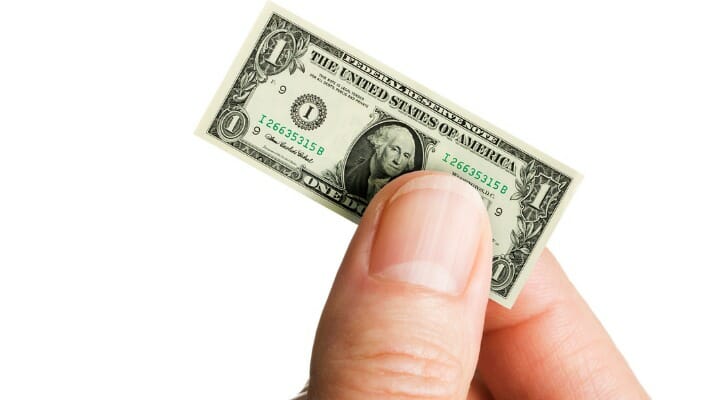What goes on to the value of money when a government prints lots of it-to spend or to simply provide to people-is that the money becomes less valuable because there is more money per unit things to buy with it. The expectation that this trend will maintain then triggers a constant process of increasing prices, called inflation, while the resulting expectation that the rate of inflation will continue to increase triggers hyperinflation.
Hyperinflation is most unpopular with people who insist upon keeping their savings in the form of cash. In response, they turn to buying up and holding on to other things, causing shortages and further pushing up prices. But all of these problems can now be solved because we have the technology to make hyperinflation safe, comfortable, convenient and fun for the whole family!
By the time it takes an entire bulging wallet full of $100 bills just to buy some fresh fruits, most people will take the hint and on your own switch to waving their smartphones around to pay for things.
A lot more frequent than the periodic alterations in the hyperinflationary money itself will be the necessary changes to the prices costed for every product imaginable. Depending on the rate of hyperinflation, all prices ought to be adjusted upwards on a regular basis-perhaps once a week, once a day, an hour or even once a second.
To take maximum benefit of Everyday Higher Prices, software would need to be written to make it possible to automatically place an entire raft of previously set up orders the moment a sum of money lands in an account, to be able to lock in the lowest possible prices.
The program should make it possible to prioritize purchases, placing feminine hygiene products and diapers, pharmaceutical drug medicines, toilet paper and other outright necessities near the top of the list and luxuries (soft drinks and booze, chips and cookies, clothing and footwear) near the bottom, to be purchased only when the deposited funds turn out to be sufficient.
Mathematical theories will be hatched to calculate the optimum rate of hyperinflation, as has been done with inflation. No doubt great effort is likewise invested in finding the proper, principled way to systematically underestimate hyperinflation, in the same way has been completed with inflation today, with the help of hedonic adjustments and similar tricks, to make sure that the value of payments indexed to hyperinflation (for instance, government pensions and long-term contracts such as rental and lease agreements) decreases over time.
Perhaps this might be done by introducing Voluntary Simplicity Adjustments: if almost nobody heats or air conditions their house any more or has hot and cold running water, then the exorbitant cost of such luxuries would be excluded from the basket of goods and services used to measure the rate of hyperinflation. Similar reasoning could be used to exclude the cost of cars, bicycles, skateboards and shoes.
A hedonic adjustment could also be applied throughout, based on the fact that people would enjoy a greater feeling of moral superiority from the fact that they are no longer having children and generally emitting less carbon dioxide, thus helping save the planet from catastrophic global warming (although it is by no means certain).
Evidently, temporary inflation is originating. The thing to recall is that inflation is very rarely accidental. If you doubt that, then ponder how so many countries in the past with ‘mysteriously’ generated inflation manage to conjure up all those coins and banknotes just soon enough to meet the interest in more zeros on their currency denomination. Remember, governments in dire straights pay their people in freshly minted cash paid for by haircutting savings. It generally takes a long time for countries to get their finances straight.






